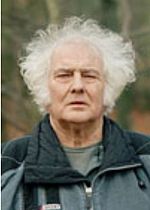Jan Wolkers's Human Design Chart
1/3 Splenic Projector**Jan Wolkers: A Life of Art and Literature through the Lens of Human Design**
Jan Wolkers (October 26, 1925 – October 19, 2007) was a distinguished Dutch author, sculptor, and painter, recognized as one of the “Great Four” writers of post-World War II Dutch literature. Born in Oegstgeest, Netherlands, as the third child in a large family of eleven siblings, Wolkers’ upbringing profoundly shaped his creative spirit and artistic pursuits.
His artistic journey began after leaving secondary education prematurely, as he explored various jobs before discovering his passion for drawing. From October 1941 until November 1944, he attended evening drawing classes in Leiden. During World War II, he sought refuge in his parental home to evade forced labor in Germany. After the war, he briefly moved to Paris but returned to the Netherlands due to financial constraints. He later studied at the Royal Art Academy in The Hague, eventually focusing on sculpture in Amsterdam, where he graduated in 1953.
As a Projector in Human Design, Jan Wolkers possessed a unique ability to guide and influence others, often waiting for invitations to share his insights and creativity. This aspect of his design allowed him to navigate the complexities of the artistic world with grace and intuition. His Splenic Authority enabled him to tap into his instincts, which played a critical role in shaping his literary themes and artistic expressions. The 1/3 Profile reflects a combination of investigation and experimentation, allowing him to learn through experience and adapt to life’s challenges.
Wolkers is best known for his novel “Turkish Fruits,” which delves into themes of love, death, and sexuality, heavily influenced by his passionate relationships, including a tumultuous affair with Annemarie Nauta. The novel’s adaptation into a film garnered an Academy Award nomination for Best Foreign Language Film in 1972 and was later honored as the Best Dutch Film of the Century in 1999.
His artistic legacy includes numerous outdoor sculptures throughout the Netherlands, often crafted from glass and steel, despite facing vandalism over the years. Notable works include his Auschwitz monument of broken mirrors, unveiled in Amsterdam and later restored after being destroyed. These contributions to memorials and monuments reflect his deep engagement with history and the human experience.
Wolkers’ Incarnation Cross, the Right Angle Cross of The Unexpected, signifies his ability to navigate life’s unpredictabilities and embrace change. This theme resonates throughout both his personal life and artistic creations. He was married three times and had three children, with his relationships often serving as inspiration for his work.
Jan Wolkers passed away peacefully in his sleep on October 19, 2007, in Westermient on the Isle of Texel. His rich legacy of literature and art continues to resonate with audiences today. Understanding his Human Design offers deeper insight into the nuances of his creative process and personal journey, showcasing the interplay between his artistic genius and the unique energies he embodied throughout his life.
Discover More Famous People
Browse and analyze over 55,000 public figures and celebrities.
Ra Uru Hu
5/1 Manifestor
Martha Stewart
4/6 Manifestor
David Lynch
4/6 Generator
Barack Obama
6/2 Projector
Steve Jobs
6/3 Generator
Vladimir Putin
5/1 Manifestor
Kim Kardashian
3/5 Generator
Michael Jackson
1/3 Projector
Marilyn Monroe
6/2 Projector
Ariana Grande
2/4 Projector
Oprah Winfrey
2/4 Generator
Johnny Depp
2/4 ManifestorWhat is HumanDesign.ai and how does it work?
Curious what makes Jan Wolkers tick? HumanDesign.ai instantly maps their exact birth data into a fully interactive clickable bodygraph chart, letting you hover or tap every center, channel, and gate for plain-language explanations. Bella, the platform’s built-in AI guide, adds context in real time, translating complex mechanics into everyday insights so you can see how Jan Wolkers’s strengths, challenges, and life themes play out on-screen.
The same tools are waiting for you. Generate your own Human Design Chart in seconds, open a library of 2000+ suggested questions, and chat with Bella as often as you like to decode your design, daily transits, and even relationship dynamics.
Want to compare energies? Save unlimited charts for friends, family, or clients, then ask Bella to reveal compatibilities, composite patterns, or coaching tips, all in one conversation thread.
Start free with core features, or unlock our Personal and Pro plans for deeper dives: unlimited Q&A, celebrity chart search spanning 55,000+ public figures, white-label PDF reports, branded content generation, and a professional profile with built-in booking for practitioners. Whether you’re exploring your own potential or guiding others, HumanDesign.ai delivers an ever-expanding toolbox of AI-powered insights—no spreadsheets, no jargon, just clarity at your fingertips.
Ready to see yours? Signup for FREE today!

